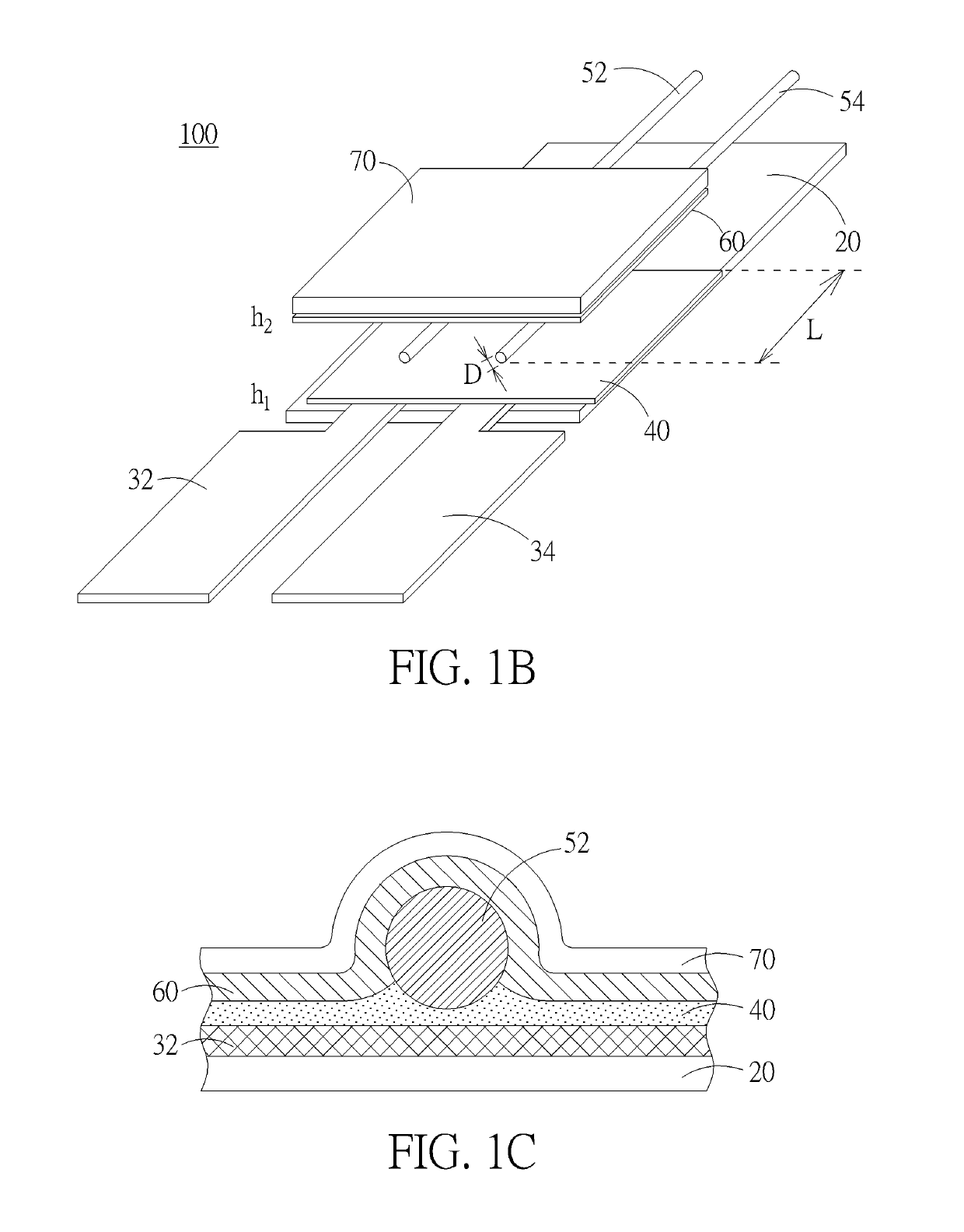Electrical connection structure
a connection structure and electrical connection technology, applied in the direction of non-conductive materials with dispersed conductive materials, synthetic resin layered products, protective garments, etc., can solve the problems of inability to obtain overall physiological sensing information, obvious foreign body sensation, and affect the result of detected results captured by smart devices, etc., to achieve the effect of more labor hours and more cos
- Summary
- Abstract
- Description
- Claims
- Application Information
AI Technical Summary
Benefits of technology
Problems solved by technology
Method used
Image
Examples
example 1
[0102]The preparation of the electrical connection structure includes the following steps:[0103]1. A hot melt adhesive film of 2.5 cm×15 cm was used as a substrate. A prepared first conductive textile layer (0.5 cm×5 cm) and another prepared second conductive textile layer (0.5 cm×5 cm) were arranged at parallel intervals of 0.5 cm between them on the hot melt adhesive film (the side away from the release paper). The preheating is carried out at a temperature of 100° C. for about 5 seconds to fix the hot melt adhesive film and the conductive textile layers. Each contact area of the conductive textile layer and the hot melt adhesive film is 0.5 cm×1.5 cm, and each conductive textile layer has an area of 0.5 cm×3.5 cm which is not in contact with the hot melt adhesive film.[0104]2. An anisotropic conductive adhesive film A of 2.5 cm×1.5 cm was taken to be adhered to the first conductive textile layer and to the second conductive textile layer at the same time. Then, pre-pressing was c...
example 2
[0113]The preparation of Example 2 was the same as that of Example 1 except that Step 4 and Step 5 were altered as follows:[0114]4. A flat needle used for dispensing was filled with 5 g of epoxy resin, and a dispenser was used to coat two copper wires with a coating thickness of 35 μm. Afterwards, the epoxy resin was heated to a temperature of 120° C. for 2 minutes to be cured.[0115]5. The epoxy resin of step 4 was covered with a protective layer of 2.5 cm×1.5 cm and heated by a hot presser at a temperature of 120° C. and under a pressure of 3 kg / cm2 for 60 seconds to obtain another electrical connection structure.
example 3
[0135]The preparation of Example 3 is the same as that of Example 1, except that the anisotropic conductive adhesive film A in Step 2 and in Step 4 was replaced with the anisotropic conductive adhesive film B, and the thickness of the conductive adhesive was 30 μm (excluding the release paper). Therefore, the total thickness of the electrical connection layer and the adhesive layer was 60 μm. The results of the laundering test are listed in Table 3.
PUM
| Property | Measurement | Unit |
|---|---|---|
| thickness | aaaaa | aaaaa |
| thickness | aaaaa | aaaaa |
| thickness | aaaaa | aaaaa |
Abstract
Description
Claims
Application Information
 Login to View More
Login to View More - R&D
- Intellectual Property
- Life Sciences
- Materials
- Tech Scout
- Unparalleled Data Quality
- Higher Quality Content
- 60% Fewer Hallucinations
Browse by: Latest US Patents, China's latest patents, Technical Efficacy Thesaurus, Application Domain, Technology Topic, Popular Technical Reports.
© 2025 PatSnap. All rights reserved.Legal|Privacy policy|Modern Slavery Act Transparency Statement|Sitemap|About US| Contact US: help@patsnap.com



